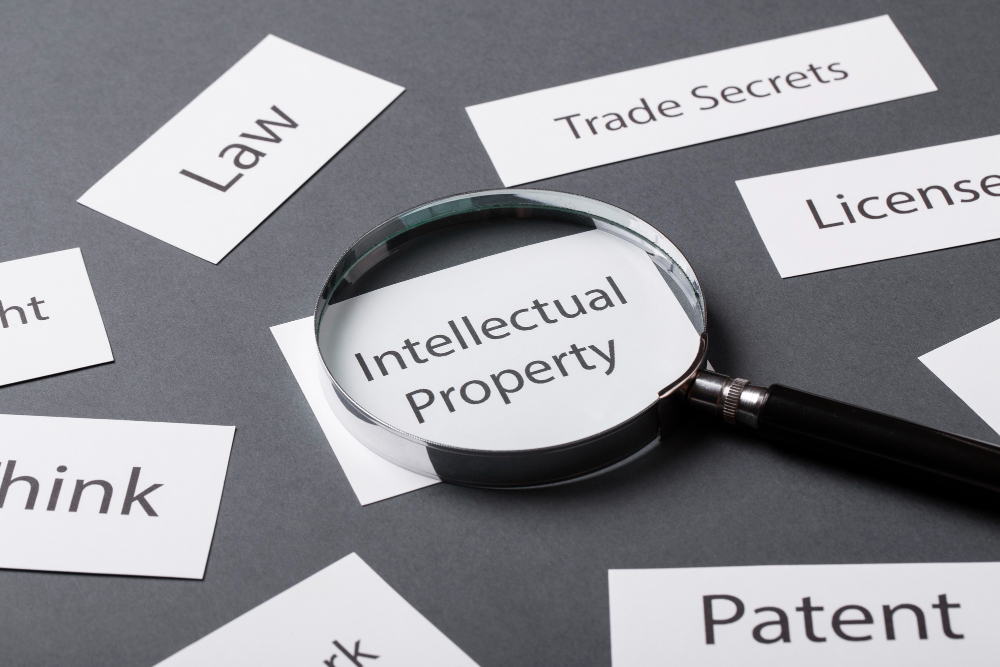How Indian Courts Calculate Trademark Damages: What Every Brand Owner Should Know
By SolvLegal Team

In a competitive marketplace, a trademark is not just a name or logo, it encompasses a brand's image, represents trust and is a connection to consumers. For owners of brands, protecting their trademark is not just a legal obligation, it is life and death. However, when a trademark is stolen or hijacked, what relief is available to the owner? What must a brand owner prove when their trademark has been copied, infringed upon, or exploited?
This is where trademark law comes into play. More importantly, this is where Indian courts undertake the assessment and determination of damages to be awarded. In this blog, we will take you through how Indian courts analyse trademark infringement cases, how they compute damages, and what you brand owners need to know to protect your rights and reputation.
The Foundation: Understanding Trademark Damages in India
India's trademark law is governed by the Trade Marks Act, 1999, which provides the owners of registered trademarks with rights to pursue civil remedies for infringement, to stop their trademarks from being used, to claim for damages etc. Generally speaking, interim injunctions are granted to put an end to the misuse of the mark, but the assessment of what damages should be awarded to an aggrieved party is not so straightforward.
India, like many Western legal systems, does not provide statutory damages for trademark infringement. They are not simply going to award you damages just for establishing trademark infringement. Instead, Indian courts usually expect plaintiffs to present proof of actual loss. This is not the end of it, however. As courts outlined in one case , they have been willing to award punitive compensation cases involving intentional or bad faith conduct.
It may also be pertinent to note that while the superior remedies in the Trade Marks Act apply to registered trademarks, there is no limitation under the common law remedy of passing off which deals with unregistered trademark protection, as it does not expressly limit remedies to registered trademarks. The plaintiff must show goodwill, misrepresentation, and damage in pursuing its claim of passing off. However, in passing off actions, the burden is heavier, but damages could still be pursued.
Types of Damages: What Can You Expect?
Let’s explore the main kinds of damages Indian courts may award-
1. Compensatory Damages
The purpose of compensatory damages is to place the trademark owner in the position it would have been but for the infringement. The court considers the tangible loss, such as:
● Decrease in sales
● Market share erosion
● Customer diversion
● Brand dilution or devaluation
A quantification can be complicated. The court will look at previous years’ sales, previous trends, or accounting expert reports and consider how much better were the performance and the profits.
The Delhi High Court in the case of Time Inc. v. Lokesh Srivastava (2005) said once, that compensatory damages[MA3] had a very real role in Indian jurisprudence and since, other courts have taken up the message.
2. Punitive Damages or Exemplary Damages
Punitive damages seek to punish the infringer and deter others: these are available when the infringement is:
● Deliberate
● Repetitive
● Accompanied by fraudulent behaviour or bad faith
The Delhi High Court in the case of Time Inc. v. Lokesh Srivastava (2005) said once, that compensatory damages had a very real role in Indian jurisprudence and since, other courts have taken up the message.
3. Account of Profits
The court shifted consideration from loss to gain. The infringer must pay over every cent earned from their misuse of the trademark to prevent unjust enrichment. The infringer can be ordered to account for their profits, but they must produce their books during this process and give a fair and honest account of their revenues, which we all know can be problematic.
4. Nominal Damages
These damages are granted when the plaintiff demonstrates that harm has resulted from the defendant's wrongful conduct, yet is unable to quantify a compensable loss. . This is common in passing off cases or infringement cases where the infringement only occurred for a short while and no measurable harm is apparent.
5. Interim Damages or Security Costs
In some urgent situations, courts may provide interim relief, including for interim costs or security deposits, that will be accounted for on overall adjudication. This avoids the infringer escaping any liability by absconding or dissipating their assets.
The Calculus of Compensation: What do the Courts Look At?
While there is no mathematical formula to determine damages, courts look at a range of factors:
Nature and scope of infringement: Was it minor vs. large? Was the infringing product local to a region or pan-India?
Duration: How long did the infringing last?
Reputation and distinctiveness of the mark: Well-known marks will get more protection.
Proof of actual confusion: Affidavits, complaints by customers or documentation of confused communications can be useful.
Quality differential: Is the infringing product of lesser quality that could be detrimental to the brand?
Evidence of bad faith: Ignoring previous warnings, domain squatting or complete copying of all elements of branding.
Courts may also consider international guidelines (such as WIPO instructions or U.S. decisions) in connection with complex cross-border cases.
Burden of Proof and the Plaintiff’s Duties
The plaintiff bears the responsibility of establishing the case and the damages. All of the following needs to be established:
● Proving ownership of the mark (either registered or established by use)
● Proving there is actual or likelihood of consumer confusion.
● Providing evidence of lost sales with financial records, expert testimony, or other evidentiary sources.
The more classified documentation, the stronger your case. If infringing on line or a social media infringement, retaining digital documentation is essential for proving your claim.
Proving damages does not always necessitate establishing an exact monetary loss. Courts have consistently held that in situations where precise quantification of loss is challenging, a plaintiff may rely on substantially reasonable estimates, provided these estimates are supported by credible evidence, an approach aligning with Section 20 of the Delhi High Court Intellectual Property Rights Division Rules, 2022.
Common Challenges Faced in Trademark Damage Claims
- Lack of Documentation: Many SMEs fail to maintain detailed records.
- Defendant’s Evasion: Infringers often disappear, making enforcement difficult.
- Judicial Delays: Indian litigation can take years, reducing the deterrent effect.
- Underestimation of Brand Value: Plaintiffs often fail to present compelling brand valuation reports.
- Public Perception: Courts may perceive the claim as overzealous unless it’s clearly proportionate and well-substantiated.
Despite these hurdles, a well-prepared plaintiff with legal strategy and evidentiary support stands a strong chance of being awarded meaningful relief.
Landmark Judgments Shaping the Doctrine
Time Inc. v. Lokesh Srivastava (2005): First court to adopt punitive damages in Indian IP jurisprudence.
Microsoft Corp. v. Yogesh Papat (2006): One of the earliest decisions indicating the courts' aggressive stance against software piracy.
Hero Honda Motors Ltd. v. Shree Assuramji Scooters (2006): Established that precise loss is not mandatory where the bad faith of the infringer is evident. The court considered an approach toward granting damages in cases where defendants chose not to appear before the court
Tata Sons Ltd. v. Manoj Dodia (2011): Emphasized the doctrines of trademark dilution and trans-border reputation, thereby reinforces the sanctity of established trademarks but also sets a precedent for the enhanced protection of well-known marks irrespective of the similarity of goods or services involved.
Christian Louboutin SAS v. Nakul Bajaj & Ors. (2018): Delhi HC laid down the criteria and framework for intermediary liability in sales of counterfeit goods through online platforms.
These cases are part of an ongoing jurisprudential evolution that takes the law from a conservative position toward a more assertive, rights protecting position in the space of the law being examined.
Is Criminal Action Also Possible?
Yes. There are also criminal remedies provided for under Sections 102 to 105 of the Trade Marks Act, 1999. Offences such as falsifying a trademark or selling counterfeit goods can lead to imprisonment and fines.
Although, there are damages in civil suits, the majority of brand owners will still file a parallel criminal complaint to:
● Raid infringer premises
● Seize counterfeit goods
● Apply pressure for out-of-court settlements
Combining civil and criminal remedies often delivers faster and more impactful results.
Global vs. Indian Approach: What You Must Know
In countries like the U.S., trademark owners can claim:
● Statutory damages (predetermined, often in thousands of dollars)
● Treble damages (three times the actual loss)
● Attorney’s fees (in exceptional cases)
India lacks such mechanisms. While this makes enforcement slower and dependent on evidence, it also ensures fairness by avoiding inflated or arbitrary award of damages.
What If the Defendant Defaults or Does Not Appear?
If the infringer fails to respond despite being served notice, the court may pass an ex-parte decree, often granting:
● Permanent injunction
● Destruction of infringing goods
● Costs and damages (based on affidavit evidence)
This reinforces the importance of acting swiftly and filing detailed pleadings.
Conclusion: Turning the Law into a Shield and a Sword
The trademark damages regime in India is not purely theoretical, it's real, it's enforceable, and it's increasingly effective. That said, success relies on your ability to document, act quickly, and litigate well.
As courts change, the real strength of your brand protection is up to your preparation. Everyone from startup to legacy company can benefit from an understanding of how the law attaches value to and compensates trademark infringement.
After all, in business your brand is not just an asset. It is your legacy.
Be informed. Be aggressive. Do not let your brand go unprotected.
Need Help with Trademark Enforcement or Infringement Claims?
SolvLegal is here to support you. Whether you’re looking to register your trademark, monitor brand misuse, or initiate a claim for damages against infringers, our legal-tech platform makes expert IP legal support simple, swift, and affordable.
Don’t let infringement erode your brand value consult our experienced IP lawyers, access ready-to-use legal templates, or initiate action directly through SolvLegal.
Visit https://solvlegal.com/ today and safeguard what you’ve built.





Leave a Comment